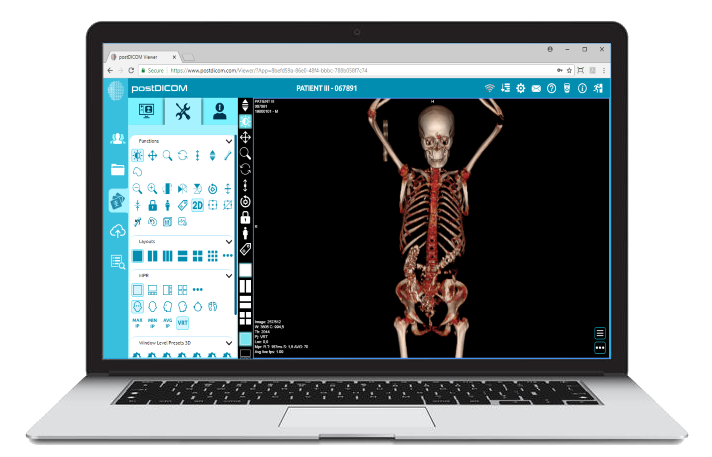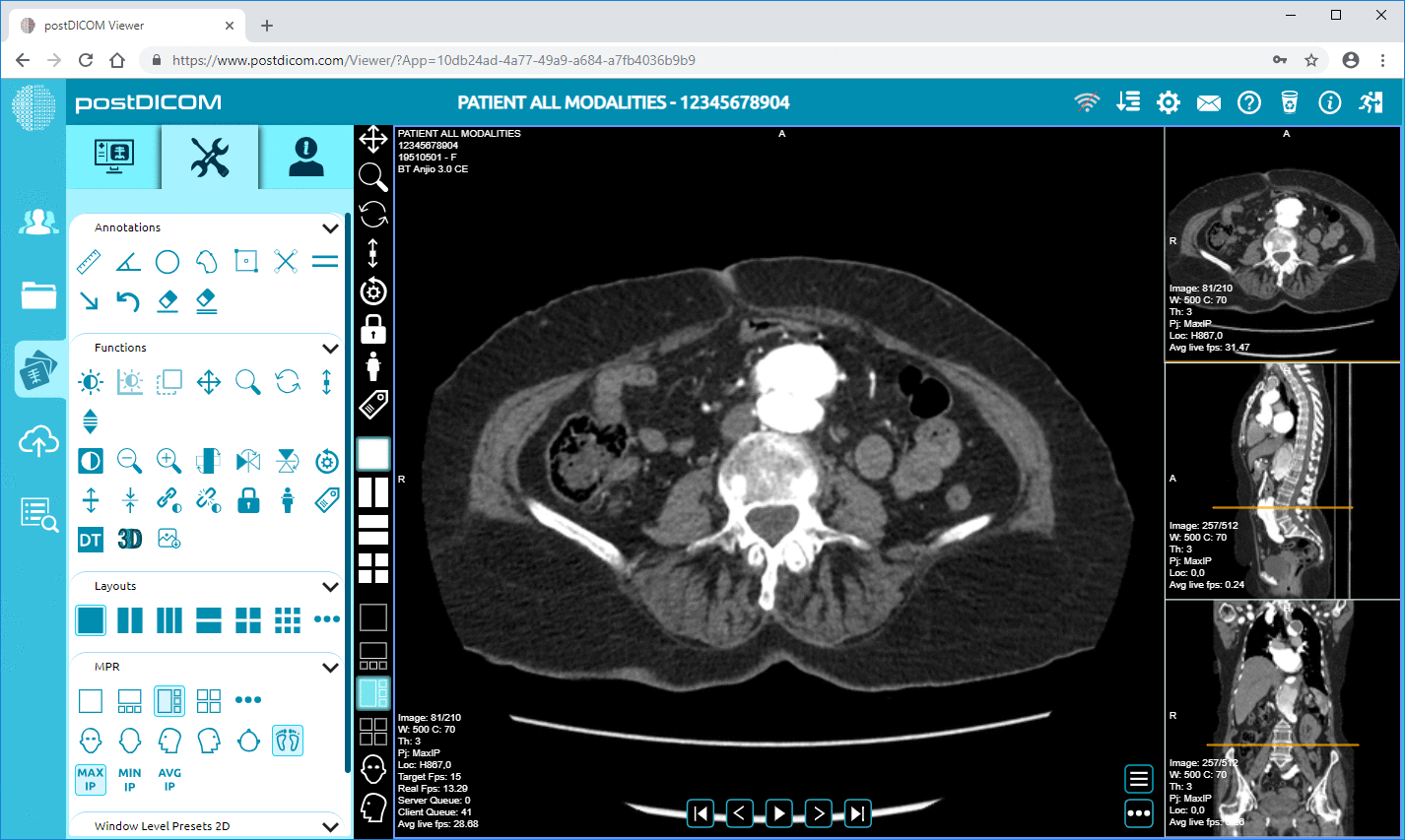
The healthcare industry has witnessed a massive shift in recent years, with the rise of telemedicine and remote diagnostics becoming a central part of modern care. One key technology contributing to this shift is cloud-based PACS, which has streamlined medical imaging storage and communication. Traditional PACS systems, often housed in on-premise servers, have proven to be inefficient and costly in a world where remote access to medical images is crucial.
Enter cloud-based PACS: a solution that addresses these challenges and supports telemedicine by providing seamless access to medical images anytime, anywhere.
PACS, or Picture Archiving and Communication System, is a medical imaging technology used to store, retrieve, manage, and share images generated by radiology, such as X-rays, CT scans, MRIs, and ultrasounds. PACS replaces the traditional method of storing images on film or physical media, offering digital storage and improving accessibility.
Historically, PACS systems were on-premise solutions, meaning hospitals and clinics had to invest heavily in physical storage, servers, and IT infrastructure to store and manage images. However, as healthcare facilities became more distributed and the demand for faster and more efficient access to medical images increased, cloud-based PACS emerged as a more effective solution.
Cloud-based PACS offers several advantages over traditional, on-premise solutions:
• Scalability: Cloud solutions can grow with a healthcare facility's needs, offering flexible storage options.
• Security: Cloud providers ensure that images are stored with top-tier security measures, meeting strict healthcare compliance standards, including HIPAA.
• Easier Access: Medical professionals can access imaging data from anywhere, at any time, improving collaboration across locations.
• Cost-effectiveness: Cloud storage eliminates the need for expensive hardware and ongoing maintenance, making it a more affordable option for healthcare providers.
Telemedicine has transformed healthcare delivery by enabling remote consultations and diagnostics. Healthcare professionals need reliable, fast, and secure access to patient images for telemedicine to work effectively. This is where cloud-based PACS steps in.
Cloud-based PACS accelerates the diagnostic process by enabling the rapid sharing of medical images across distances. For example, healthcare professionals can upload X-rays or CT scans to the cloud, where specialists can access them for analysis and provide second opinions, all without needing to be physically present in the same location.
• Remote Access: Cloud PACS allows for the sharing of images across geographical boundaries, allowing healthcare professionals to consult on cases without being in the same room—or even the same country.
• Faster Diagnosis: With cloud-based systems, there is no need for physical transport of images, enabling faster diagnosis and treatment planning.
• Improved Rural Healthcare: Cloud PACS provides access to high-quality medical images in remote or underserved areas where radiologists may not be available. Rural healthcare providers can send images to specialists in urban centers for prompt analysis, improving the quality of care for rural patients.
Sending DICOM (Digital Imaging and Communications in Medicine) images to a PACS system is fundamental to modern medical imaging workflows. DICOM is the standard format for transmitting medical images, and it is essential for ensuring compatibility between different imaging devices and PACS systems.
Sending DICOM images to a PACS system involves several steps:
1. Capture the Image: The imaging device (e.g., MRI machine, X-ray) generates the DICOM image.
2. Transmit the Image: The image is transmitted from the device to the PACS system using DICOM networking protocols. These include:
• C-store: The protocol used for sending images to a PACS system.
• C-find: Used to search for images within the PACS system.
• C-move And C-get: These protocols move or retrieve images from one PACS system to another.
PostDICOM makes this process seamless by automating DICOM transmissions to the cloud, eliminating the need for manual intervention. Healthcare providers can upload and retrieve images without the usual technical hurdles, ensuring fast and secure transfers.
Cloud-based PACS enables healthcare professionals to diagnose patients remotely by providing access to imaging data from anywhere. This is especially crucial when specialists are unavailable on-site, such as in rural hospitals or emergency medical situations.
• Quick Diagnosis: Healthcare professionals can review and diagnose cases promptly, even from a distance, by accessing patient images from the cloud.
• Collaborative Diagnostics: Cloud PACS enables multidisciplinary teams to collaborate on patient cases by sharing images and diagnostic reports, regardless of physical location.
• Cost Efficiency: For small clinics or independent practitioners, cloud-based PACS reduces the need for expensive infrastructure while providing access to advanced diagnostic tools.
 - Created by PostDICOM.jpg)
As telemedicine grows, integrating artificial intelligence (AI) into cloud-based PACS systems will become increasingly important. AI-powered diagnostic tools can automate image analysis, flagging abnormalities for radiologists to review and accelerating the diagnostic process.
AI tools integrated with PACS can assist healthcare professionals by automating the detection of anomalies in medical images, such as tumors or fractures.
Integrating PACS with electronic health records (EHRs) and patient portals allows for a more holistic approach to patient care, where medical imaging data is easily accessible alongside patient history and other health information.
PostDICOM has emerged as a leader in cloud-based PACS solutions, offering a robust and scalable platform designed to meet the needs of modern healthcare providers. Here’s why PostDICOM stands out:
• Cloud Storage: PostDICOM offers secure, scalable cloud storage, eliminating the need for on-premise hardware and reducing costs.
• Security: PostDICOM’s solution is HIPAA-compliant, ensuring that patient data is protected with the highest security standards.
• Telemedicine Compatibility: The platform is designed to support telemedicine workflows, enabling remote consultations and collaborative diagnostics.
PostDICOM’s solution helps healthcare providers streamline their imaging processes, improve patient outcomes, and reduce operational costs, making it an indispensable tool for hospitals, clinics, and individual practitioners.
Integrating cloud-based PACS in telemedicine and remote diagnostics is changing the healthcare landscape, offering faster, more efficient, and more accessible services to patients and healthcare providers alike.
PostDICOM’s Cloud PACS stands at the forefront of this revolution, providing secure, scalable, and intuitive imaging solutions that support telemedicine workflows and enhance the diagnostic process.
Try PostDICOM’s Cloud PACS - a cutting-edge solution that’s fast, secure, and scalable. Revolutionize the way you access, share, and diagnose medical images. Start a free trial today!


|
Cloud PACS and Online DICOM ViewerUpload DICOM images and clinical documents to PostDICOM servers. Store, view, collaborate, and share your medical imaging files. |